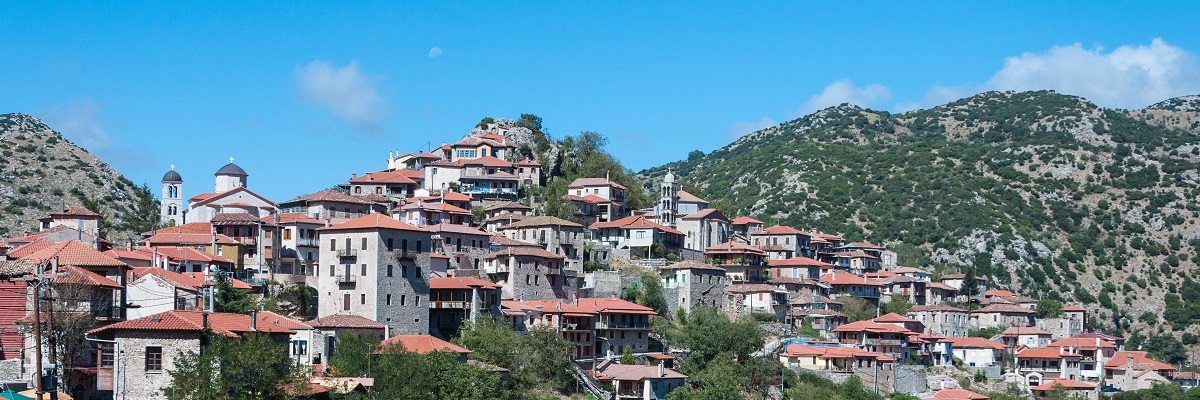Dimitsana

Dimitsana is built on a spacious shoulder, the unique passage in the upper valley of river Lousios, at an altitude of 1000m. The location is ideal and is inhabited since ancient times: in the “Platsa”, the outer part of the natural shoulder, sections of isodomic ancient wall are visible between the walls of newer houses, which belonged to the acropolis of ancient Tefthis, the town itself possibly located in the smoother slopes below Dimitsana, towards Paleochori.Dimitsana was from the 18th century an important regional commercial center and benefited, for a period of two centuries, great economic prosperity thanks to the water-powered craft (flour, fulling, tanning and gunpowder mills), pulled by the abundant waters of the valley. Part of watermills and gunpowder mills have been restored in the excellent Open Air Water Power Museum of Dimitsana, located after the exit to the large headspring of Ai-Giorgis, just outside the city. By the late 19th century, after the development of industrial methods, the water-powered craft declined and Dimitsana lost its boost, but it remained an important transportation and administrative hub. The town itself, protected as a traditional settlement, has many historically or architecturally important buildings and monuments such as: the house of archbishop Gregorios the 5th (which has been renovated and now houses the Ecclesiastical Museum), the building of the Seminary of Dimitsana (that today houses the Library with over 15,000 volumes, among them rare editions, codes and a vast historical file, plus a folklore collection), the house of archbishop Paleon Patron Germanos, the five-storey Xenios tower (built in 1850 by the raisin trader Constantine Koukouzas) and many more. Among the seven churches dating to the 17th, 18th and 19th century, the ones presenting particular interest are the the cathedral church of Aghia Kyriaki, St. Euthymius, St. Georgios, St. John and the church of the Archangels. The monasteries of Philosophou, Panagia Emialon, the new Philosophou monastery and Prodromou monastery all flourished at the same time as Dimitsana due to their safe location on the axis of the ravine of river Lousios and their close dependence with the town. The archaeological site of ancient Gortys is located at the exit of the gorge of river Lousios. Excavations have revealed a large part of the citadel and an important Asklipieio with baths.







